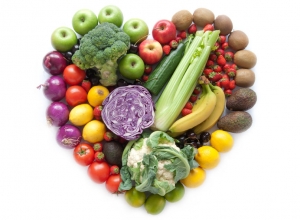Sedentary lifestyles are killing us – we need to build activity into our everyday lives, not just leave it for the gym.
By Vybarr Cregan-Reid Thu 3 Jan 2019 01.00 EST
Originally Published by The Guardian
This is the time of year when trainers are mined from under beds and gym kits are disinterred from the bottom drawer. Google searches relating to physical fitness peak in January. Many people even trawl the web to find out about “desk exercises” and “workouts on the go” in case they are too busy to use their new gym memberships.
Why Fruits and Vegetables Are Vital
Eating a diet rich in fruits and vegetables is important for good health. Find out why experts say Mother Nature's bounty packs better nutrients than supplements.
If we are what we eat, then many of us must be tripping all over the place due to a lack of balance. That's because the average American eats about three servings of fruits and vegetables per day — a stark contrast to the Department of Health and Human Services (HHS) and the U.S. Department of Agriculture's (USDA) new guidelines stating that we should be eating 5 to 13 servings of nature's best, depending on the number of calories you need.
So if we want to grow to be strong like Popeye, why can't we just down some supplements instead of devouring a pile of spinach?
Nutrients in fresh fruits and vegetables work together. Kristine Wallerius Cuthrell, MPH, RD, a research nutritionist and senior project coordinator for Hawaii Foods at the Center on the Family at University of Hawaii at Manoa, says that in the past five to 10 years, many large research studies have found that vitamin supplements don't provide the benefits that foods do. The 2005 Dietary Guidelines for Americans, created jointly between HHS and USDA and reviewed every five years, say that foods are the best sources of nutrients because they contain naturally occurring ingredients, like carotenoids and flavonoids.
"In addition to the substances we are aware of, there are many present in fruits and vegetables that have yet to be discovered. Food and the nutrients they contain aren't consumed singly, but with each other. As such, they may act in synergistic ways to promote health," Cuthrell says. For instance, eating iron-rich plants, like spinach, with an iron-absorbing enhancer, like the vitamin C in orange juice, is great for people who don’t get enough iron (typically young women).
Fruits and vegetables may prevent many illnesses. Eating fruits and vegetables may reduce your risk of cardiovascular diseases, stroke, type 2 diabetes, and even some forms of cancer. The Nurses' Health Study and Health Professionals Follow-up Study examined nearly 110,000 people over the course of 14 years. Part of the study revealed that the more fruits and vegetables people ate daily, the less chance they would develop cardiovascular diseases.
The relationship between fruits and vegetables and cancer prevention has been more difficult to prove. However, recent studies show that some types of produce are associated with lower rates of some types of cancer. For example, the World Cancer Research Fund and the American Institute for Cancer Research suggest that mouth, stomach, and colorectal cancers are less likely with high intakes of non-starchy foods like leafy greens, broccoli, and cabbage. Though studies have been mixed, lycopene, a carotenoid that gives tomatoes their red color, may help stave off prostate cancer.
Fruits and vegetables are great for watching your weight. They’re low in fat and calories, and loaded with fiber and water, which create a feeling of fullness. This is particularly helpful for dieters who want more filling calories. Plus, that fiber helps keep you “regular.”
Fruits and Vegetables: Get Your Fill
When adding fruits and vegetables to your diet, remember that variety is the spice of life. It's important to eat produce of various colors because each fruit or vegetable offers a different nutrient — think of it as nutritional cross-training. Trying new foods can be exciting, and be sure to sample every color in the produce rainbow.
The right number of servings of fruits and vegetables for you all depends on your daily caloric intake needs. A good way to find out how many servings you should be eating is by using the CDC's online serving calculator. Or make things even simpler by eating a fruit or vegetable at every meal and snack.
Don't let season, accessibility, or cost affect your fruit- and vegetable-friendly diet. If finding fresh produce is difficult, choose frozen, canned (low-sodium), or dried varieties. Also, 100 percent juice counts toward your servings, though it doesn't offer the full fiber of whole fruit.
The power of prevention may lie in a salad bowl or a plate of fruit. When we take advantage of produce, our bodies return the favor by reducing our risk of developing various illnesses.
Originally Published by: Everydayhealth.com By Melanie Winderlich Medically Reviewed by Pat F. Bass, III, MD, MPH
http://www.everydayhealth.com/diet-nutrition/101/nutrition-basics/fruits-and-vegetables.aspx

The Alpha Group is excited to introduce Alpha Cares!
This December The Alpha Group will kick off our year-long Alpha Cares Campaign, which raises awareness and funds for a variety of causes near and dear to our hearts. Our team will be planning numerous events throughout the year to not only shed light on all of these causes, but also help promote participation within our community.
Throughout the month various resources will be available with facts and statistics on that month’s focus, as well as ways to aid in prevention and treatment.
To do this, however, we will need your help!
December is International Safe Toys and Gifts Awareness Month. Come join us as we get into the holiday giving season! We will be holding a Toys for Tots drive November 28th - December 14th, and are calling for donations of new, unwrapped toys. The toys can be dropped off in the lobby our Norton office, all of which will then be donated to Toys for Tots.
If you would like to hear more about donating to Toys for Tots, or learn about our upcoming Alpha Cares Campaign programs please feel free to contact us!
Stay tuned for more details on upcoming months of Alpha Cares!
Here is a list of the other upcoming months and causes:
January National Blood Donor Month
February American Heart Health Month
March National Nutrition Month
April National Autism Awareness Month
May ALS Awareness Month
June Environmental Awareness
July UV Safety Month – Skin Cancer Awareness
August Animal Health Month
September Childhood Cancer Awareness
October Breast Cancer Awareness Month
November Diabetes Awareness Month
Donate Blood
Blood Facts
- Today, fewer than 4 of every 10 people in the U.S. are eligible to give blood. Fewer than 1 in 10 actually donate.
- Approximately 40,000 pints of blood are used each day in the United States.
- Approximately 1 out of every 7 people entering the hospital needs blood.
- 1 donation has the potential to save as many as 3 lives.
- 3 teaspoons of blood can save a baby's life.
- If there are 100 people in a room, 46 will have type O blood, 40 will have type A, 10 will have type B and four will have type AB.
- If 50 people donate, they could provide enough blood to take care of victims of a major car accident.
- If 20 people donate, they could help 1 burn victim.
- Most whole blood donors can give every 8 weeks.
- Plasma donors can give as often as every 3 days.
- Blood lasts only 42 days.
- Platelets last only 5 days.
See the link below for more details!
http://www.bloodsource.org/Donate/Blood-Facts-FAQs
Originally posted by Blood Source
October is Breast Cancer Awareness Month! In the United States, about 1 in every 8 women will develop an invasive breast cancer over her lifetime. The two most significant risk factors of breast cancer are being a woman and growing older. However it is possible that a man or a young person could develop breast cancer.
It’s the most deadly cancer for women other than lung cancer. About 15 percent of those diagnosed with breast cancer have a relative who also has been diagnosed. When a person has a family member with this disease, their probabilities of having it doubles. The other 85% of people diagnosed do not have a relative with breast cancer. However, through raising funds, awareness, and health studies, the breast cancer incidence rate has been dropping since 2000.






